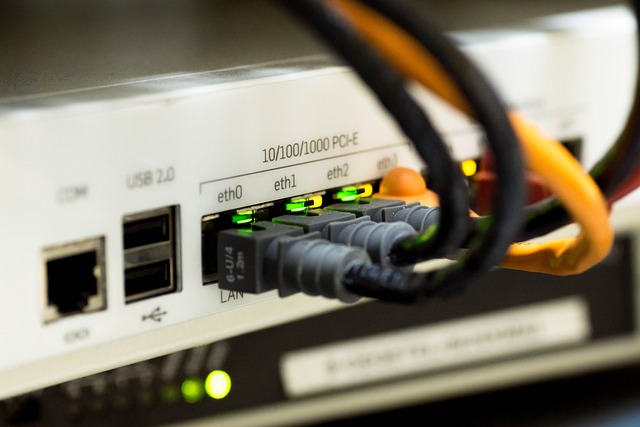The figure depicts how a router first determines the best path, and then forwards the packet. There are 5 steps depicted with these steps:
1. The data link frame with an encapsulated IP packet arrives on the ingress interface.
2. The router examines the destination IP address in the packet header and consults its IP routing table.
3. The router finds the longest matching prefix in the routing table.
4. The router encapsulates the packet in a data link frame and forwards it out the egress interface. The destination could be a device connected to the network or a next-hop router.
5. However, if there is no matching route entry the packet is dropped.
Routing Information
The routing table of a router stores the following information:
- Directly connected routes – These routes come from the active router interfaces. Routers add a directly connected route when an interface is configured with an IP address and is activated.
- Remote routes – These are remote networks connected to other routers. Routes to these networks can either be statically configured or dynamically learned through dynamic routing protocols.
Specifically, a routing table is a data file in RAM that is used to store route information about directly connected and remote networks. The routing table contains network or next hop associations.
These associations tell a router that a particular destination can be optimally reached by sending the packet to a specific router that represents the next hop on the way to the final destination. The next hop association can also be the outgoing or exit interface to the next destination.
Directly Connected and Remote Network Routes
The destination network entries in the routing table can be added in several ways:
- Local Route interfaces – These are added when an interface is configured and active. This entry is only displayed in IOS 15 or newer for IPv4 routes, and all IOS releases for IPv6 routes.
- Directly connected interfaces – These are added to the routing table when an interface is configured and active.
- Static routes – These are added when a route is manually configured and the exit interface is active.
- Dynamic routing protocol – This is added when routing protocols that dynamically learn about the network, such as EIGRP or OSPF, are implemented and networks are identified.
Dynamic routing protocols exchange network reachability information between routers and dynamically adapt to network changes.
Each routing protocol uses routing algorithms to determine the best paths between different segments in the network, and updates routing tables with these paths.
Dynamic routing protocols have been used in networks since the late 1980s. One of the first routing protocols was RIP. RIPv1 was released in 1988. As networks evolved and became more complex, new routing protocols emerged.
The RIP protocol was updated to RIPv2 to accommodate growth in the network environment. However, RIPv2 still does not scale to the larger network implementations of today.
To address the needs of larger networks, two advanced routing protocols were developed: Open Shortest Path First (OSPF) and Intermediate System-to-Intermediate System (IS-IS). Cisco developed the Interior Gateway Routing Protocol (IGRP) and Enhanced IGRP (EIGRP), which also scales well in larger network implementations.
| Protocol | Interior Gateway Protocols | Exterior Gateway Protocols | |||
|---|---|---|---|---|---|
| Distance Vector | Link State | Path Vector | |||
| IPv4 | RIPv2 | EIGRP | OSPFv2 | IS-IS | BGP-4 |
| IPv6 | RIPng | EIGRP for IPv6 | OSPFv3 | IS-IS for IPv6 | BGP-MP |
End-to-End Packet Forwarding
Action Point
PS: If you would like to have an online course on any of the courses that you found on this blog, I will be glad to do that on an individual and corporate level, I will be very glad to do that I have trained several individuals and groups and they are doing well in their various fields of endeavour. Some of those that I have trained includes staffs of Dangote Refinery, FCMB, Zenith Bank, New Horizons Nigeria among others. Please come on Whatsapp and let’s talk about your training. You can reach me on Whatsapp HERE. Please note that I will be using Microsoft Team to facilitate the training.
I know you might agree with some of the points that I have raised in this article. You might not agree with some of the issues raised. Let me know your views about the topic discussed. We will appreciate it if you can drop your comment. Thanks in anticipation.
Fact Check Policy
CRMNIGERIA is committed to fact-checking in a fair, transparent and non-partisan manner. Therefore, if you’ve found an error in any of our reports, be it factual, editorial, or an outdated post, please contact us to tell us about it.
|
|


